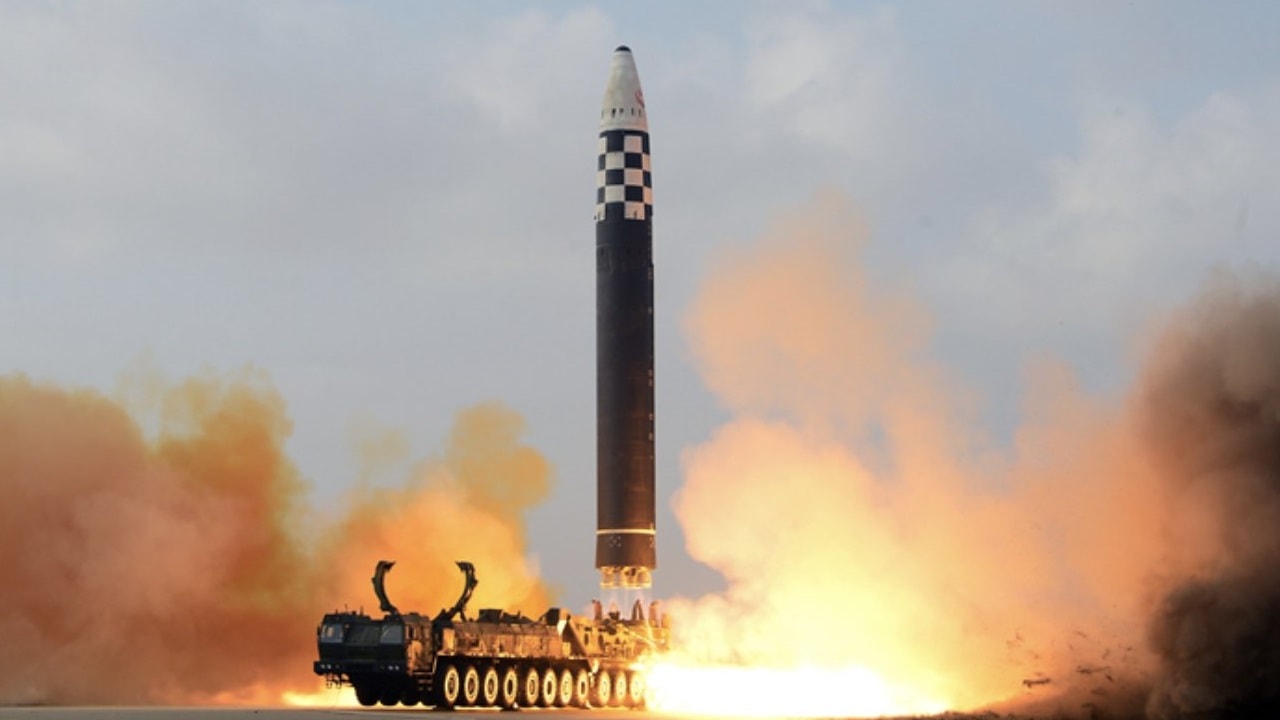Published on August 7, 2025, 9:52 AM – Key Points and Summary – As U.S. President Trump prepares to meet his South Korean counterpart, their alliance faces a fundamental crisis: North Korea’s proven ability to strike the U.S. mainland with nuclear-tipped ICBMs.
-This capability, possibly enhanced by Russian assistance, means that a U.S. defense of South Korea in a conflict could trigger a devastating nuclear attack on an American city.
-Given President Trump’s transactional approach to foreign policy, this new reality raises serious doubts about the credibility of the U.S. security guarantee, which may ultimately force South Korea to develop its own nuclear weapons.
North Korea’s Missiles Could Force South Korea to Go Nuclear
United States President Donald Trump is scheduled to meet South Korean President Lee Jae-Myung this month.
Trade will likely dominate the summit. But the long-term threat to the US-South Korea relationship is North Korea’s spiraling nuclear weapons and missile program. It is now eight years since North Korea achieved the capability to range the US mainland with a nuclear-tipped missile. There is still no real alliance consensus—at least in public—about what to do if North Korea uses a nuclear weapon.
This problem will only worsen as North Korea improves its missile technology. The analyst community has long thought that North Korea would struggle to build various advanced platforms. North Korea’s political culture is closed and repressive, which likely does not reward the intellectual and technical risk-taking required by a modern defense industrial base. And North Korea is quite poor. Its GDP is perhaps $40 billion, less than 5% of South Korea’s GDP. But again and again, we are surprised at what North Korea manages to produce—such as drones or hypersonic glide vehicles.
But the significant threat to the alliance is intercontinental ballistic missiles (ICBM), because they dramatically raise the risk to the US of meeting its security commitment to South Korea.
North Korean ICBMs
North Korea now has missiles at all relevant ranges (short, medium, intermediate, and intercontinental). Most of these are land-based. The country invests heavily in mobility—placing missiles on transporter-erector launchers and, in the future, submarines. This capability improves these missiles’ survivability.
That is, their mobility makes it harder for the US and South Korea to find and destroy them preemptively. If North Korea can ‘ride out’ a US-South Korean airstrike and hit back, the targets will almost certainly include US bases and territories.
Most important to America—and in the upcoming summit meeting—is North Korea’s intercontinental ballistic missile (ICBM) force, as that allows Pyongyang to strike the US mainland. The North has likely done enough testing of its Hwaseong-class ICBM that it can reliably strike the US homeland, although it is unclear if it can strike a specific grid reference.
The Russia Connection
Consequently, there is much suspicion that Russia is helping the North with guidance and missile re-entry in exchange for North Korea’s help in the Ukraine War.
This is hugely risky. Russian President Vladimir Putin was once wise enough to realize how dangerous a nuclear North Korea is, and he supported all the previous sanctions on the North. But Putin’s war in Ukraine has gone much worse than he anticipated. In his desperation for North Korean help, Kim may be able to extract unusually high concessions.
The ICBM Risk to the US-South Korea Alliance
As North Korea’s missile technology improves—perhaps with Russian help—the question of how the alliance should respond has sharpened. North Korea’s conventional and regional deterrence of the past mainly posed a threat to South Korea and Japan. This was bad for them, of course, but suitable for the alliance, because it exempted the US from severe North Korean retaliation. That, in turn, made American alliance commitments more credible. Yes, the North could kill US soldiers and their families in South Korea and Japan, but those numbers would likely be in the thousands. Losses of this scale were politically manageable.
But as North Korea’s missile ranges lengthen and its nukes grow more powerful, Pyongyang increasingly poses a direct threat to US territory, not just forward bases in the Asia-Pacific. In succession, Guam, Alaska, and Hawaii came into range. But in 2017, most of the continental US came into range. This situation creates the high likelihood that if the US fights for South Korea in a conflict, per its alliance commitment, that North Korea will nuke a US territory, possibly a city.
Former President Biden, a committed internationalist and alliance-builder, took this rising threat in stride. Despite it, he repeatedly, publicly re-committed America to South Korean security. But Trump is far more transactional and often expresses disdain for US allies.
So the question of how to respond to the rising North Korea risk to America will hover over the upcoming Trump-Lee summit. Given Trump’s fickleness, it is not even clear that a Trumpian re-commitment to the alliance at the summit would be credible. In time, then, South Korea will probably build its own nuclear weapons to ensure its own nuclear security.
About the Author: Dr. Robert Kelly, Pusan National University
Dr. Robert E. Kelly is a professor of international relations in the Department of Political Science and Diplomacy at Pusan National University in South Korea. His research interests focus on security in Northeast Asia, U.S. foreign policy, and international financial institutions. He has written for outlets including Foreign Affairs, the European Journal of International Relations, and the Economist, and he has spoken on television news services including BBC and CCTV. His personal website/blog is here; his Twitter page is here.
More Military
America Almost Had to Invade Japan
